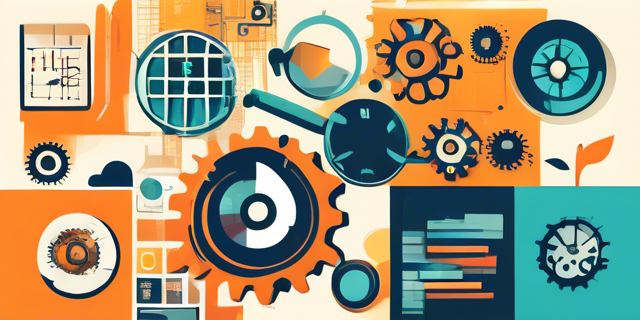Influencer Marketing in 2025: Trends, Strategies & Future Outlook
In 2025, influencer marketing is a $24.1 billion industry (Statista), driven by AI influencers, micro-creators, B2B partnerships, and social commerce. With a 5.78x ROI (Influencer Marketing Hub) and 60% higher engagement for micro-influencers (Forbes), brands must embrace authentic storytelling, AI-driven automation, and long-term collaborations to stay ahead. The future is Metaverse, Web3, and real-time analytics—are you ready? 🚀
Table of Contents
- Introduction
- Key Trends in Influencer Marketing
- Rise of Micro and Nano Influencers
- Expansion of B2B Influencer Marketing
- AI-Generated Influencers
- Long-Term Brand Partnerships
- Strategic Content Types
- Influencer-Generated Content (IGC)
- User-Generated Content (UGC)
- Employee-Generated Content (EGC)
- Platform-Specific Strategies
- Leveraging Social Commerce
- Challenges and Solutions
- Future Outlook
- Conclusion
- FAQs
Introduction
Influencer marketing has come a long way from celebrity endorsements to micro-influencers shaping brand narratives. In 2025, this industry is experiencing a paradigm shift, driven by AI, social commerce, and new content strategies.
With digital ad spending expected to surpass $600 billion globally, brands are increasingly investing in influencer marketing. But what will the future hold? This article explores the emerging trends, strategic content types, and platform-specific approaches shaping influencer marketing in 2025.
Key Trends in Influencer Marketing
1. Rise of Micro and Nano Influencers
While mega-influencers continue to hold sway, brands are prioritizing micro (10K–100K followers) and nano-influencers (1K–10K followers).
Why?
✅ Higher engagement rates than celebrity influencers.
✅ More authentic and niche-focused audiences.
✅ Affordable partnerships for small and mid-sized brands.
💡 Example: A skincare brand collaborates with 50 nano-influencers instead of a single macro-influencer, generating 3x more engagement and sales conversions.
2. Expansion of B2B Influencer Marketing
While B2C influencer marketing has dominated for years, B2B brands are now leveraging industry experts, thought leaders, and LinkedIn influencers.
✅ LinkedIn's rise as an influencer hub.
✅ Increased use of long-form content (articles, webinars, case studies).
✅ Higher trust factor with niche audiences.
💡 Example: SaaS companies are collaborating with C-suite executives and tech experts for product endorsements via LinkedIn live sessions.
3. AI-Generated Influencers
Virtual influencers, powered by AI, are becoming a disruptive force in influencer marketing.
✅ No risk of PR scandals or controversies.
✅ Controlled brand messaging and consistency.
✅ Cost-effective compared to human influencers.
💡 Example: Lil Miquela, an AI influencer, has worked with brands like Prada, proving that virtual personas can drive real engagement.
4. Long-Term Brand Partnerships
Brands are shifting from one-off campaigns to ambassadorship models, fostering deeper connections with influencers.
✅ Builds stronger brand loyalty.
✅ Ensures long-term credibility and trust.
✅ Generates higher ROI than short-term campaigns.
💡 Example: Gymshark’s multi-year partnership with fitness influencers has played a key role in its brand success.
Strategic Content Types
1. Influencer-Generated Content (IGC)
Brands are integrating products seamlessly into influencers' daily lives, making promotions feel more organic and relatable.
💡 Example: A fitness influencer vlogs a "Day in My Life" featuring a sponsored supplement brand.
2. User-Generated Content (UGC)
Customers are influencers too! Brands are amplifying UGC through social proof.
💡 Example: Coca-Cola’s "Share a Coke" campaign encouraged users to share their personalized Coke bottles, driving massive engagement.
3. Employee-Generated Content (EGC)
Employees can be the best brand advocates through storytelling.
💡 Example: Microsoft’s #MicrosoftLife campaign showcases employees’ behind-the-scenes experiences, increasing brand credibility.
Platform-Specific Strategies
📌 TikTok: Driving Discovery with Short-Form Content
- Leveraging trending challenges & viral sounds.
- Hashtag campaigns to boost visibility.
- Shoppable content integration via TikTok Shop.
📌 Instagram: Community Building & Visual Appeal
- Instagram Reels outperform traditional posts.
- Instagram Live & Stories for real-time engagement.
- Collaborating on Carousel posts for tutorials & reviews.
📌 YouTube: Long-Form Storytelling
- Detailed product reviews & tutorials.
- Behind-the-scenes footage and influencer vlogs.
- YouTube Shorts for quick tips & teasers.
📌 LinkedIn: B2B-Focused Influencer Marketing
- Thought leadership content and industry reports.
- LinkedIn Live webinars for product demos.
- Case studies & success stories for credibility.
Leveraging Social Commerce
🔹 Affiliate Marketing Growth: Influencers are driving direct sales through affiliate links and exclusive discount codes.
🔹 Live Shopping Events: Platforms like Instagram, TikTok, and YouTube are integrating live shopping features, allowing influencers to showcase products in real time.
🔹 Data-Driven Campaigns: AI-powered analytics help brands measure engagement, conversion rates, and ROI more accurately.
💡 Example: A fashion influencer hosts a live shopping event on Instagram, generating instant sales with real-time product demonstrations.
Challenges and Solutions
🚨 Challenge: Influencer saturation leading to audience fatigue.
✔ Solution: Focus on authenticity, micro-influencers, and niche content.
🚨 Challenge: Stricter advertising regulations & FTC guidelines.
✔ Solution: Clear #sponsored disclosures and transparent partnerships.
🚨 Challenge: Maintaining credibility amid paid promotions.
✔ Solution: Prioritize brand alignment with influencers' personal values.
Future Outlook
Looking beyond 2025, influencer marketing will evolve with AI-driven personalization, decentralized platforms (Web3), and immersive experiences in the Metaverse.
💡 Predictions:
🔹 AI-powered campaign automation for brands.
🔹 Metaverse influencers creating virtual brand experiences.
🔹 Blockchain-based transparency for influencer contracts & payments.
Conclusion
Influencer marketing in 2025 is more data-driven, authentic, and AI-integrated than ever before. Brands that embrace these trends, leverage micro-influencers, and prioritize community-driven content will thrive in the evolving digital landscape.
🚀 Ready to scale your influencer marketing strategy? Start implementing these trends today!
FAQs
1. How will AI impact influencer marketing in 2025?
AI will optimize campaign targeting, create virtual influencers, and enhance real-time data analytics for better ROI.
2. Are nano-influencers better than macro-influencers?
Yes! Nano-influencers often have higher engagement rates and stronger community trust despite having smaller audiences.
3. Which platforms will dominate influencer marketing in 2025?
TikTok, Instagram, and YouTube remain dominant, while LinkedIn gains traction in the B2B space.
4. How do brands ensure authenticity in influencer marketing?
By partnering with influencers who genuinely align with their brand values and encourage organic storytelling rather than scripted promotions.




Comments
Post a Comment